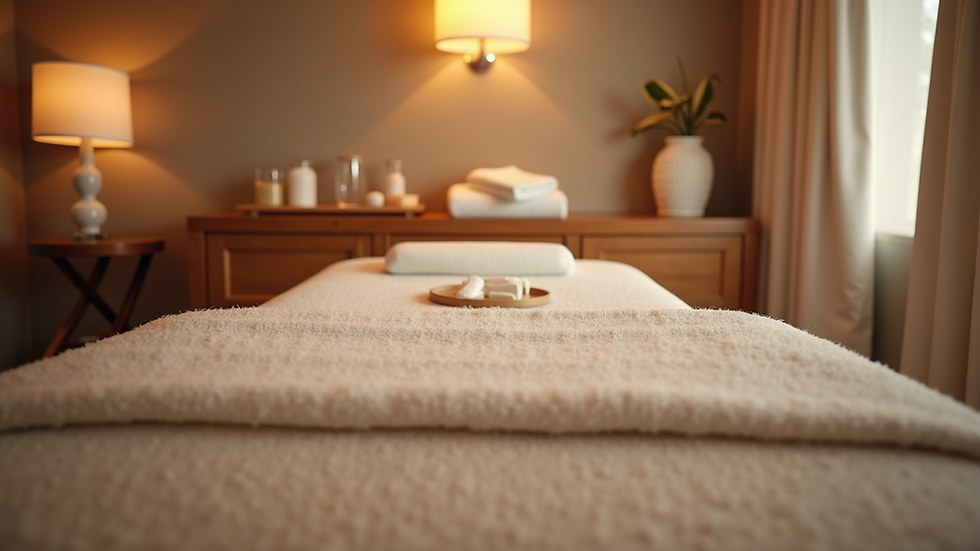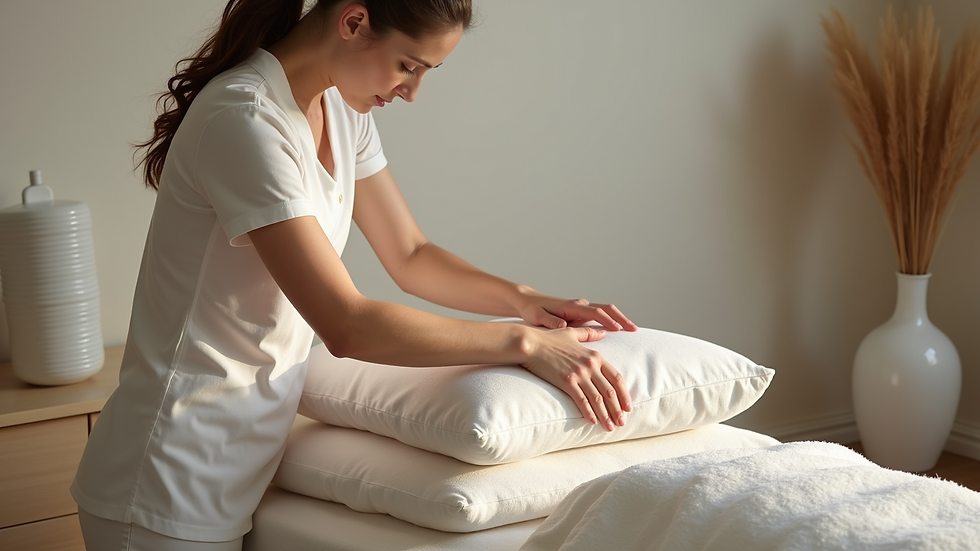Safe and Soothing Massage Options During Pregnancy
- Sarah Ratliff

- Aug 12
- 4 min read
Pregnancy is a beautiful journey filled with many changes, both physical and emotional. As the body adapts to support new life, discomforts such as back pain, swelling, and stress often arise. Many expectant mothers seek natural ways to ease these symptoms and promote relaxation. One effective method is prenatal massage, a specialized form of bodywork designed to support the unique needs of pregnant women. This article explores safe and soothing massage options during pregnancy, offering practical advice and insights to help you make informed decisions.
Understanding Prenatal Massage and Its Benefits
Prenatal massage is a gentle, therapeutic massage tailored specifically for pregnant women. It focuses on relieving common pregnancy discomforts while ensuring the safety of both mother and baby. Unlike regular massages, prenatal massage uses techniques and positions that accommodate the growing belly and avoid pressure on sensitive areas.
Some key benefits of prenatal massage include:
Reduced muscle tension and pain: Targeting areas like the lower back, hips, and shoulders helps alleviate soreness caused by pregnancy-related posture changes.
Improved circulation: Massage encourages better blood flow, which can reduce swelling in the legs and feet.
Stress relief: The calming effects of massage can lower anxiety and promote better sleep.
Hormone regulation: Massage may help balance hormones, reducing symptoms like depression and fatigue.
When performed by a certified prenatal massage therapist, this treatment can be a safe and effective way to enhance comfort throughout pregnancy.

Safe Prenatal Massage Techniques and Positions
Safety is paramount when considering massage during pregnancy. Certain techniques and positions are recommended to ensure comfort and avoid any risks.
Recommended Techniques
Swedish massage: This gentle technique uses long, flowing strokes to relax muscles and improve circulation.
Light kneading and circular movements: These help relieve muscle tightness without applying deep pressure.
Avoiding deep tissue massage: Deep pressure can be unsafe during pregnancy, especially on the abdomen and certain pressure points.
Safe Positions for Prenatal Massage
Side-lying position: Lying on the left side with pillows for support is the most common and safest position after the first trimester.
Seated position: Sitting upright in a comfortable chair can be used for back and shoulder massage.
Semi-reclined position: A slightly reclined position with support cushions can be comfortable during early pregnancy.
Avoid lying flat on your back after the first trimester, as this can compress major blood vessels and reduce circulation.
What to Avoid
Pressure on the abdomen: Direct pressure on the belly should be avoided.
Certain pressure points: Areas like the ankles and wrists have pressure points that may stimulate contractions.
Hot stone or deep heat treatments: These can raise body temperature to unsafe levels.
Always communicate openly with your massage therapist about your comfort and any concerns.

How Many Weeks Pregnant Should You Not Get a Massage?
Knowing when to start or avoid massage during pregnancy is important for safety.
First trimester caution: Many healthcare providers recommend avoiding massage during the first 12 weeks due to the higher risk of miscarriage during this period. However, some therapists trained in prenatal massage may offer gentle treatments if cleared by your doctor.
After the first trimester: Prenatal massage is generally considered safe from the second trimester onward, provided there are no complications.
High-risk pregnancies: If you have conditions such as preeclampsia, placenta previa, or a history of preterm labor, consult your healthcare provider before scheduling a massage.
Late pregnancy: Massage can still be beneficial in the third trimester but should be adapted to accommodate increased size and sensitivity.
Always get approval from your healthcare provider before starting prenatal massage, especially if you have any pregnancy complications.
Choosing the Right Prenatal Massage Therapist
Finding a qualified therapist is essential for a safe and effective experience.
What to Look For
Certification in prenatal massage: Therapists should have specialized training in pregnancy massage techniques.
Experience with pregnant clients: Ask about their experience and comfort level working with expectant mothers.
Clean and comfortable environment: The massage space should be relaxing and equipped with pregnancy-safe supports like bolsters and pillows.
Clear communication: The therapist should discuss your medical history, preferences, and any concerns before starting.
Questions to Ask Your Therapist
Are you certified in prenatal massage?
What techniques do you use for pregnant clients?
How do you ensure safety during the massage?
Can you accommodate any specific pregnancy-related issues I have?
Preparing for Your Massage
Wear comfortable, loose clothing.
Avoid heavy meals before the session.
Stay hydrated.
Inform the therapist of any discomfort during the massage.

Additional Tips for Enhancing Comfort During Pregnancy
Besides massage, there are other ways to support your body and mind during pregnancy:
Regular gentle exercise: Activities like walking, swimming, and prenatal yoga can improve circulation and reduce muscle tension.
Proper hydration: Drinking plenty of water helps reduce swelling and supports overall health.
Balanced diet: Nutrient-rich foods provide energy and promote fetal development.
Adequate rest: Prioritize sleep and use pillows to support your body for better comfort.
Stress management: Techniques such as meditation, deep breathing, and listening to calming music can complement massage benefits.
Incorporating these habits alongside safe prenatal massage can create a holistic approach to pregnancy wellness.
Embracing the Benefits of Pregnancy Massage
Pregnancy is a time to nurture both your body and mind. Incorporating a pregnancy massage into your prenatal care routine can provide much-needed relief from discomfort and stress. By choosing safe techniques, working with qualified therapists, and listening to your body, you can enjoy the soothing benefits of massage throughout your pregnancy journey.
Remember, every pregnancy is unique. Always consult your healthcare provider before starting any new treatment, and prioritize your comfort and safety above all else. With the right approach, prenatal massage can be a wonderful way to support your well-being and prepare for the arrival of your little one.
-01.png)



Comments